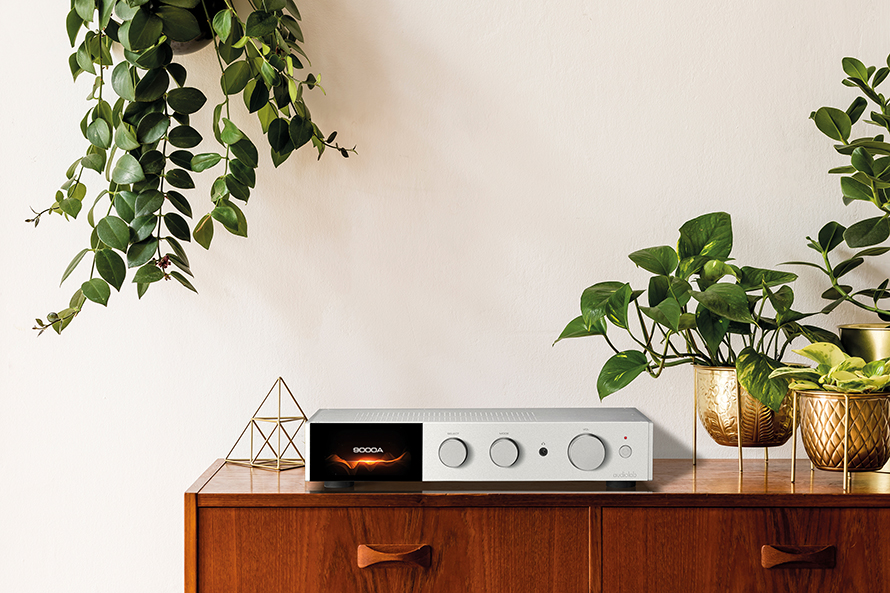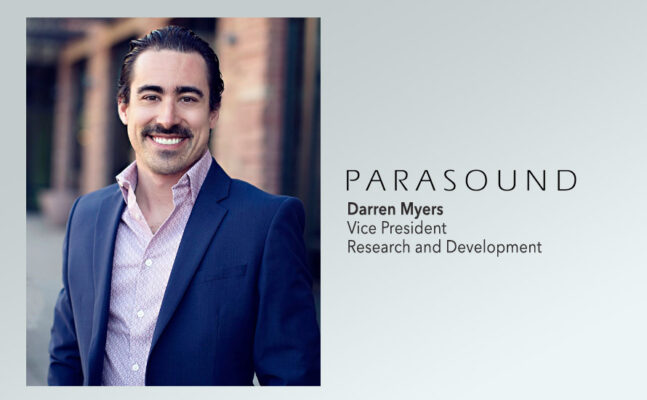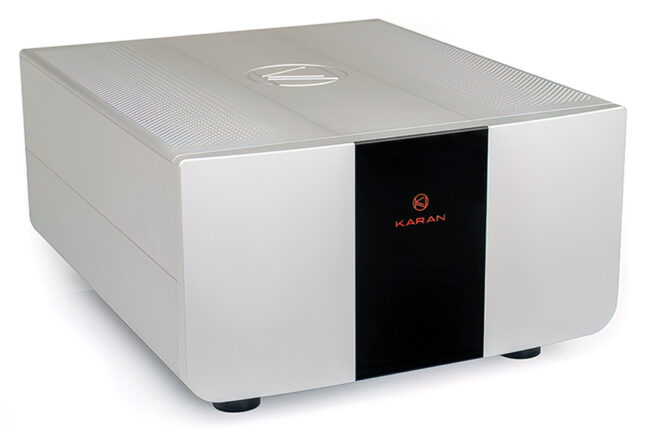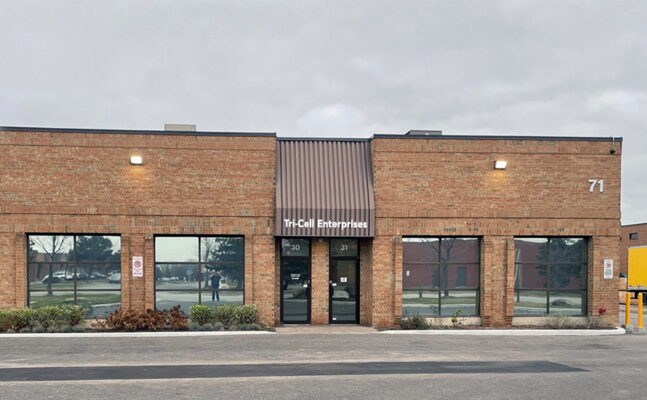When A Manufacturer Excels
In our ongoing quest for the best musical reproduction, we seek the best combinations of components and cables to achieve the ultimate goal. This search is greatly simplified when the manufacturer offers us a family of products designed to work together. There’s no need to search for the perfect match; it already exists. Some manufacturers already provide this solution, such as Naim and Nagra, often mentioned in these pages. Daniel Hertz, created by Mark Levinson, goes so far as to offer cables and connectors to use with its devices. Here, we present the 9000 Series family from Audiolab, featuring three devices: the 9000N streamer, the 9000CDT CD transport, and the 9000A amplifier. Let’s explore them together.
The English company Audiolab was founded in 1983 by Philip Swift and Derek Scotland when they were both students, sharing an interest in creating high-fidelity components at reasonable prices with user-friendly simplicity. Audiolab introduced its first products with the 8000 series, starting with an integrated amplifier (A) and later adding an amplifier (S), a tuner (T), a phono preamplifier (PPA), and eventually the best monoblocks (M) available at that time. TAG McLaren acquired Audiolab in 1997, and it was later transferred to IAG in 2004 (alongside Luxman, Wharfedale, and Quad, to name a few). Today, Audiolab continues its mission to offer well-designed components that provide high-performance sound coupled with exceptional value. Audiolab offers the 6000, 7000, 8000, and 9000 series. Here, we evaluate the flagship products of the brand.
Technical Description
The Audiolab 9000A amplifier is the central component of the trio, capable of functioning as an integrated amplifier, preamplifier, or amplifier depending on your configuration. Launched a few months ago, the 9000 series represents the highest quality level offered by the manufacturer. The 9000A delivers 100 W of power per channel at 8 ohms. The 9000A is responsible for the DAC function of the 9000CDT CD transport, simplifying the setup and avoiding duplication. The ESS 9038Pro (32-bit) processor handles the digital-to-analog conversion. The amplifier features a 4.3-inch, 4-color LCD screen for configuration adjustments using the device’s buttons or the remote control. This screen is also present on the other two devices evaluated here.
The 9000A also has a device MODE selection button (preamplifier, amplifier, or integrated). At the back, the 9000A is equipped with XLR and RCA inputs, a phono input (MM), as well as Coax and Optical digital inputs and USB. It supports PCM formats (max. 32 / 768) and DSD (max. DSD512, exclusively on USB).
The 9000N streamer is built on an ARM Cortex-A53 processor running Linux. The internal DAC is also the ESS 9030PRO. It supports most streaming platforms on the market and MQA. This streamer handles PCM formats (max. 32 / 768) and DSD (max. DSD512). In addition to the LCD screen, there is a volume button that can be disengaged if you choose to control the volume only on the 9000A amplifier, as well as an input selection button. At the back, the 9000N has Ethernet and USB-B input connectors, as well as RCA, XLR, optical, and coaxial output connectors. An interesting new feature on this Audiolab streamer is Gapless Playback, allowing continuous playback between tracks. Many classical or progressive rock albums have pieces that seamlessly transition, and this is a new feature introduced by Audiolab in recent months.
The 9000CDT CD transport allows for playing CDs or digitizing them to a USB drive. It can also read HDD formats under different FAT on the USB port. The 9000CDT has coaxial and optical output ports. It can read PCM 48 kHz formats but will convert them to 44.1 kHz. The device is well-built, and no mechanical noise was noted during its use. The 9000CDT pre-reads the next track several times, if necessary, to avoid playback interruption if the disc is damaged.

Unboxing and Installation
The devices were delivered to me in three large boxes, one for each of the components analyzed. Following Audiolab’s recommendations, I connected the 9000N streamer via XLR and the 9000CDT CD transport via coaxial to the 9000A amplifier. All devices come with the same comprehensive remote control, in addition to the free Audiolab 9000N app for Apple and Google devices. Once everything was connected, I left the devices untouched for several days. The burn-in time took longer than usual, as I wanted to achieve the best musical result from this set. Satisfactory results were obtained after more than two weeks of burn-in. Be aware of this if you ever have the chance to listen to these devices. The Audiolab 9000A amplifier also functions as a headphone amplifier with a dedicated amplification circuit for this purpose. I briefly used this feature, which provided excellent results.

The 9000N streamer can connect to most streaming platforms available. I used Qobuz for this product review and created a playlist in the 9000N app on my tablet. The Audiolab streamer is Roon Ready, but certification was not available during this test. The Audiolab 9000CDT CD transport allows for digitizing CDs in addition to listening to them. It uses the DAC of the 9000A because it is solely a CD transport.
Listening Impressions
I allowed myself the pleasure of rediscovering the Festival du Son et de l’Image (FSI) 1999 album in its physical version. This official FSI CD was distributed for free to the early visitors, thanks to the generosity of the salon and Quebec Audio (or TED Magazine nowadays) magazine. It is a selection of musical tracks from the early recordings of the Fidelio Audio company. I will always remember the recording sessions we conducted with my partner René Laflamme. I even appear on the album as an artist because the Anciens Petits Chanteurs du Mont-Royal are among the first musicians recorded by Fidelio Audio (now Fidelio Music). In my humble opinion, the masterpiece is Tallulah, recorded live at the L’Air du Temps jazz bar in Old Montreal, unfortunately now closed. The bass clarinet solo in this piece is surprising due to its unique timbre produced by the metal and wood of the instrument and its wide range. The Audiolab 9000CDT and the DAC of the 9000A faithfully reveal, without any coloration, all the subtleties of the instrument and the audience reactions during this performance. The imaging is precise, and no instrument is pushed to the forefront, as some devices tend to do, unfortunately.
In the album Officium under the ECM label, the saxophone and the Hilliard Ensemble’s male voice quartet blend their harmonies, enchanting us with selected pieces from the polyphonic repertoire of early and Renaissance music. I recall attending the concert this ensemble gave at the Notre-Dame Basilica in Old Montreal as part of the Montreal International Jazz Festival. The Hilliard Ensemble singers and saxophonist Jan Garbarek walked around the church during their performance to offer interpretations under different reverberations, which almost become the ensemble’s sixth musician. The musical track Parce Mihi Domine is an excellent introduction to the album. We immediately know the harmonic ranges we will be immersed in during the listening session. The piece is also presented in two other versions in the album, as is often the case in many jazz albums. The musical track Beata Viscera showcases the talent of the singers using harmonic or overtone singing, allowing a singer to produce two notes simultaneously. I was able to compare the 9000CDT with the 9000N since the digital version is also available in streaming. I noted a very slight difference in favor of the CD version, but it could be due to the streaming version’s quality. The difference is truly minuscule. I would have liked to compare it with my digitized version, but Roon was not available on the streamer at the time of writing this review.

The album of the Israel Chamber Orchestra under the baton of Yoav Talmi from the Chandos label presents primarily chamber music pieces for strings. The opening musical track, Bloch’s Concerto Grosso No.1, is exceptionally accompanied by a piano. Barber’s Adagio is probably the most well-known piece on the album, and the interpretation is well-executed. Being performed here by a smaller ensemble allows the nuances of the score to be revealed. Audiolab allows us to appreciate the gems of the score and the overall result of the orchestra.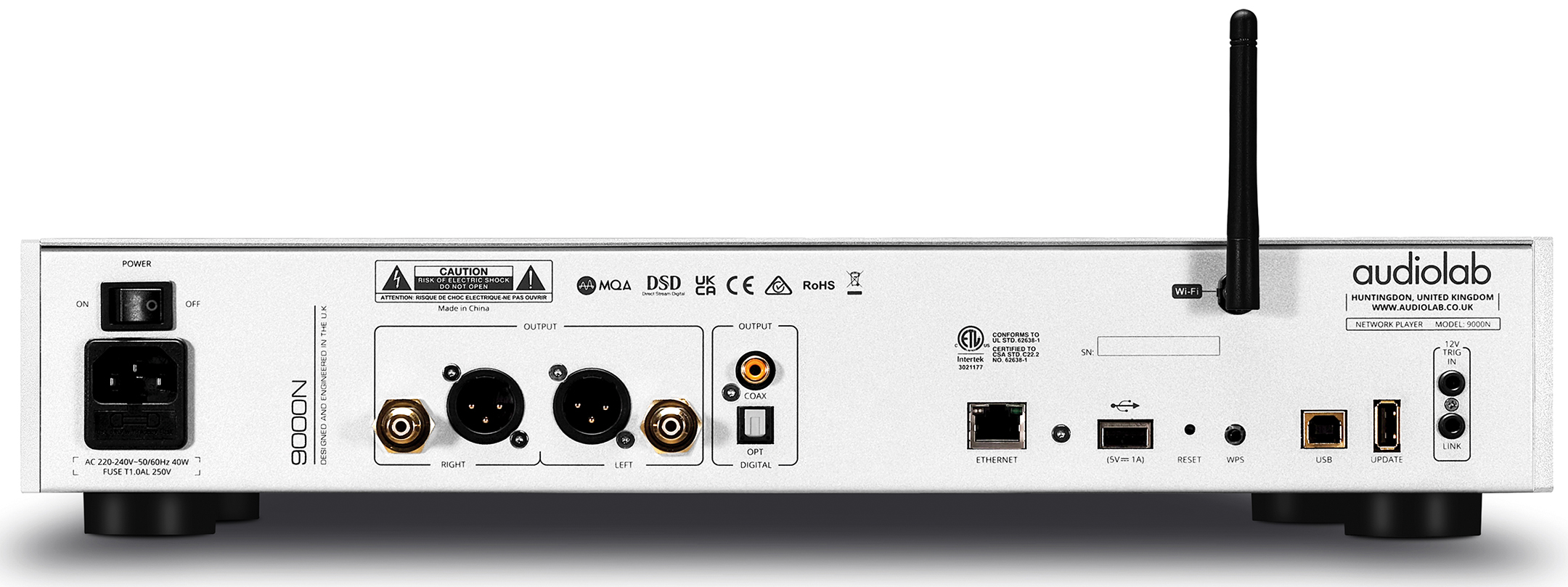
The album After Hours by the trio Previn / Pass / Brown is truly delightful. The fame of Joe Pass and Ray Brown is well-established, while we already knew that conductor André Previn is an excellent pianist, even though he had not made a jazz recording in 27 years! Surprisingly, most of the pieces presented on this Telarc album are first takes. The album is intimate with slower tempos than usual. The musical track All the Things You Are begins with Joe Pass’s solo guitar. Ray Brown comes and supports him, and then André Previn joins them on the piano. We are simply enchanted by the harmonies delivered by these legendary musicians who seem to have played together their entire lives. Audiolab simply and faithfully delivers the music played here brilliantly. The musical track Smoke Gets In Your Eyes also deserves careful listening, as well as the piece Laura with an absolutely fantastic solo by Joe Pass. The 9000N streamer and the DAC of the 9000A do not add any color to the instrument timbres. The recording quality would need to match the interpretation’s caliber, and Audiolab does not alter the result, presenting an honest image of what Telarc intended to produce here. I appreciate seeing that quality devices can also make music with recordings that are not of impeccable quality.
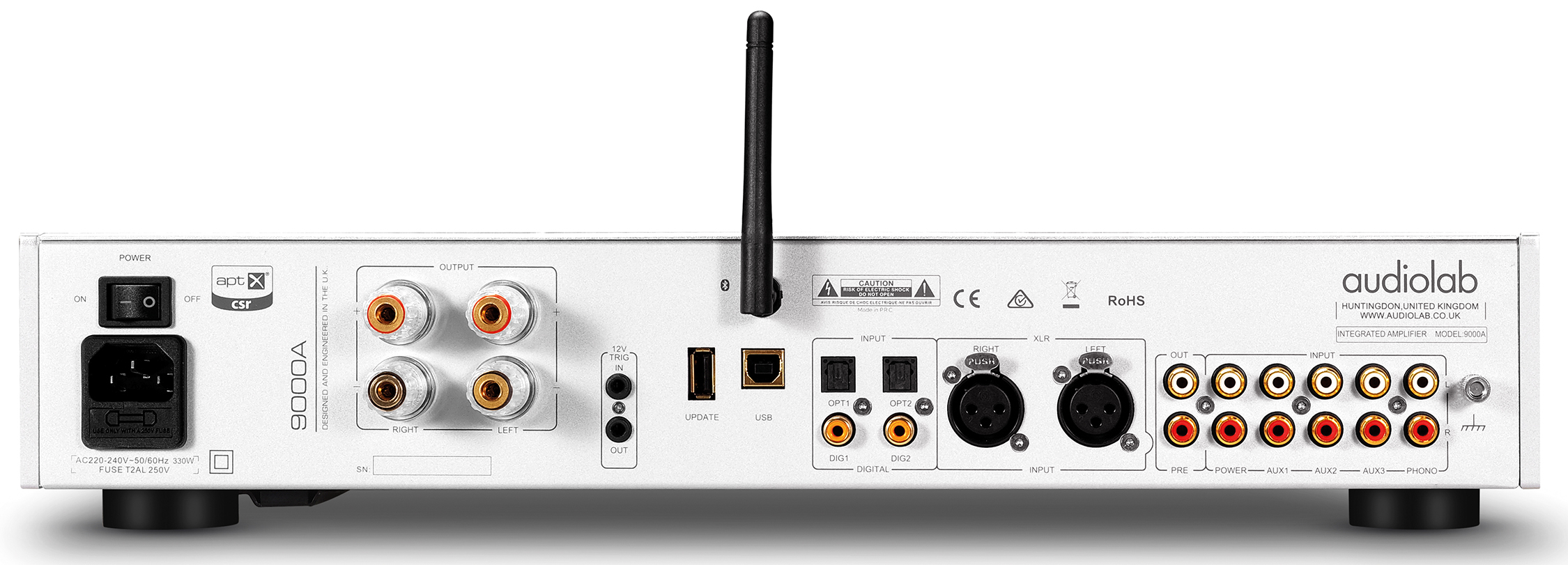
Conclusion
The trio from Audiolab’s 9000 series, featuring the transport- streamer-amplifier set launched last spring, stands at the top of the products offered by this manufacturer. These are attractive, well-built components, and the sound lives up to our expectations. If you want to buy your equipment from a single manufacturer, Audiolab delivers with an easy-to-use and install set that will provide you with years of enjoyment. You can also enjoy available upgrades without having to replace all your components. The DAC function is found in the 9000A amplifier and the 9000N streamer, and you can connect an external DAC if desired. These three Audiolab devices connected to a good pair of loudspeakers will offer superior performance at an affordable price.
GENERAL INFORMATION
Audiolab – Amplifier 9000A
Price: $3,499
Warranty: 3 years, parts and labor
Audiolab – CD Transport 9000CDT
Price: $1,749
Warranty: 3 years, parts and labor
Audiolab – Streamer 9000N
Price: $4,499
Warranty: 3 years, parts and labor
Distributor: Erikson Home, Tel: 1-800-567-3275
Mediagraphy
Official Festival du Son et de l’Image 1999 Album, Fidelio Audio, FACD901, CD ADD 16 / 44
André Previn, Joe Pass, and Ray Brown, After Hours, Telarc Jazz, 0888072508705, FLAC 16 / 44
Jan Garbarek/The Hilliard Ensemble, Officium, ECM, 78118-21525-2, CD DDD and FLAC 16 / 44
Yoav Talmi/Israel Chamber Orchestra, Bloch, Barber, Grieg, and Puccini, Chandos, 5014682859325, CD DDD 16 / 44
https://www.eriksonconsumer.com/erikson-home/
https://www.audiolab.co.uk/


